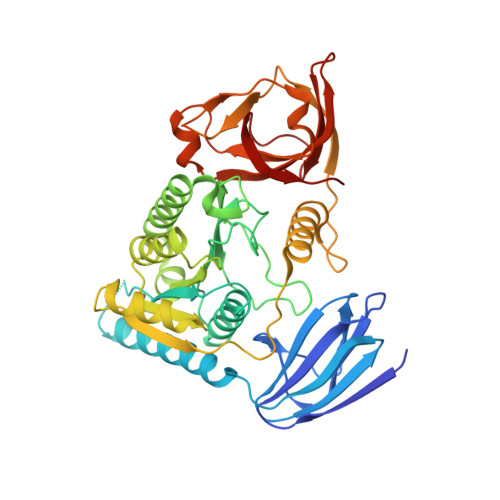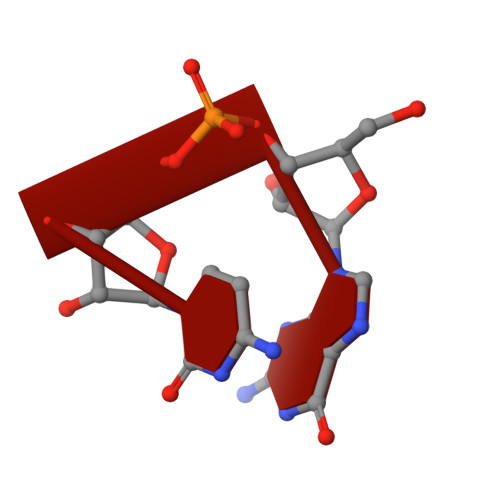RNA specificity and regulation of catalysis in the eukaryotic polynucleotide kinase clp1.
Dikfidan, A., Loll, B., Zeymer, C., Magler, I., Clausen, T., Meinhart, A.(2014) Mol Cell 54: 975-986
- PubMed: 24813946
- DOI: https://doi.org/10.1016/j.molcel.2014.04.005
- Primary Citation of Related Structures:
4OHV, 4OHW, 4OHX, 4OHY, 4OHZ, 4OI0, 4OI1, 4OI2, 4OI4 - PubMed Abstract:
RNA-specific polynucleotide kinases of the Clp1 subfamily are key components of various RNA maturation pathways. However, the structural basis explaining their substrate specificity and the enzymatic mechanism is elusive. Here, we report crystal structures of Clp1 from Caenorhabditis elegans (ceClp1) in a number of nucleotide- and RNA-bound states along the reaction pathway. The combined structural and biochemical analysis of ceClp1 elucidates the RNA specificity and lets us derive a general model for enzyme catalysis of RNA-specific polynucleotide kinases. We identified an RNA binding motif referred to as "clasp" as well as a conformational switch that involves the essential Walker A lysine (Lys127) and regulates the enzymatic activity of ceClp1. Structural comparison with other P loop proteins, such as kinases, adenosine triphosphatases (ATPases), and guanosine triphosphatases (GTPases), suggests that the observed conformational switch of the Walker A lysine is a broadly relevant mechanistic feature.
- Department of Biomolecular Mechanisms, Max Planck Institute for Medical Research, Heidelberg 69120, Germany.
Organizational Affiliation:





















